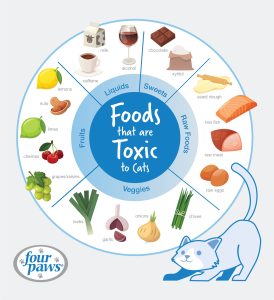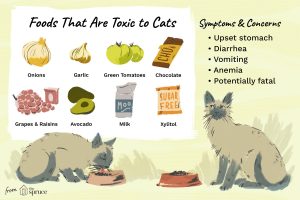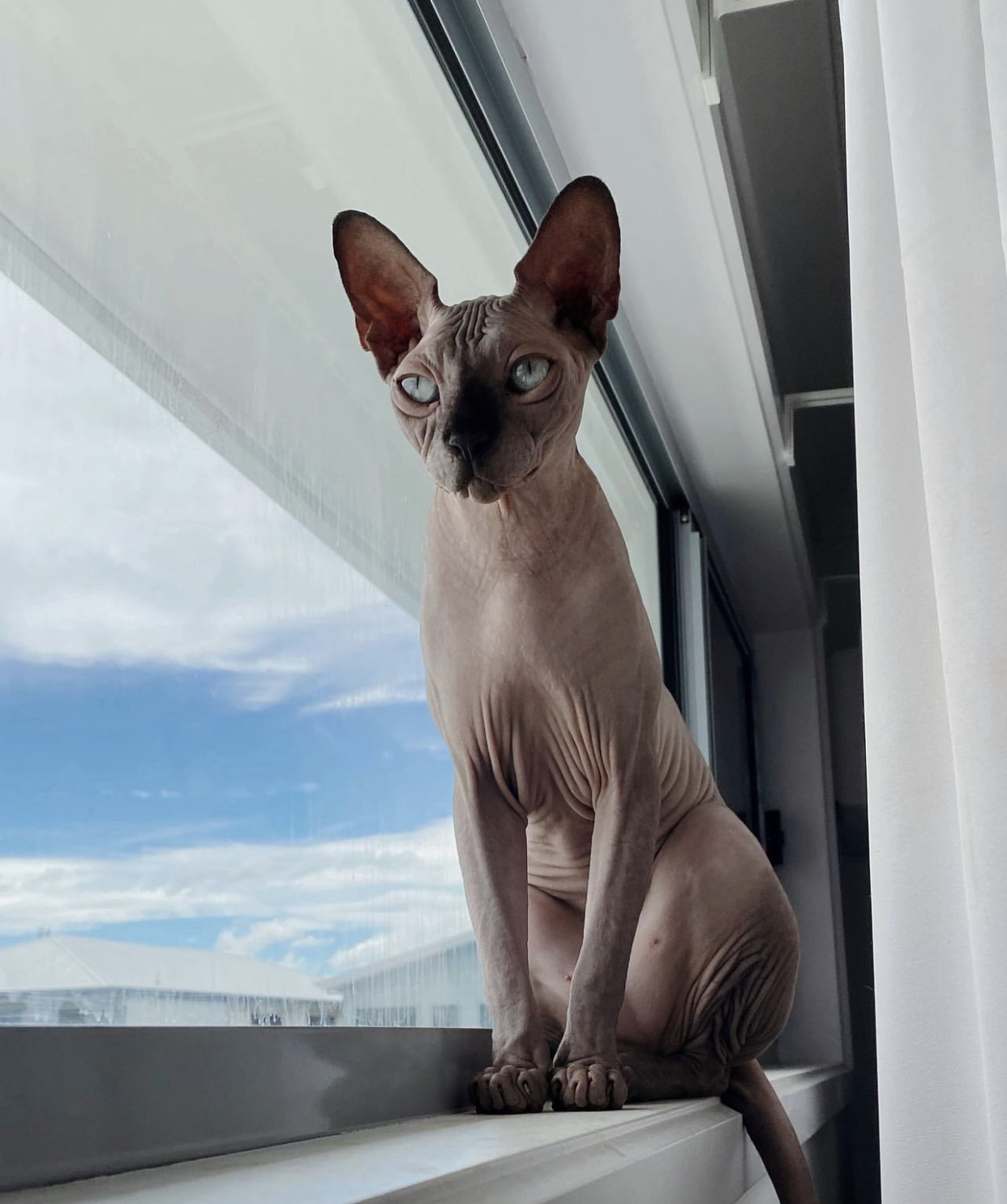what can cats eat , can cats eatare obligate carnivores, which means their diets primarily consist of animal-based proteins and fats. Here’s a list of foods that are safe for cats to eat:

what can cats eat
- Commercial Cat Food: High-quality commercial cat food, whether it’s dry kibble or wet canned food, is specially formulated to meet a cat’s nutritional needs. Look for products that are labeled “complete and balanced” to ensure your cat gets all the essential nutrients.
- Raw Meat: Some cat owners feed their cats raw meat diets. If you choose to do this, it’s essential to ensure the meat is fresh, properly handled, and comes from sources that are safe for consumption. Consult with a veterinarian or a feline nutritionist for guidance.
- Cooked Meat: Cats can eat cooked meats such as chicken, turkey, beef, and fish in small, bite-sized portions. Ensure the meat is plain, without seasonings, spices, or sauces. Cooked eggs are also safe for cats.
- Fish: Many cats enjoy fish, such as salmon or tuna. However, it’s best to offer fish in moderation as an occasional treat due to potential concerns with heavy metals like mercury and nutrient imbalances in some fish.
- Canned Tuna (in water): A small amount of canned tuna in water can be an occasional treat for cats, but it should not replace their regular cat food. Canned tuna may not provide all the necessary nutrients.
- Catnip: Catnip is a safe and non-toxic herb that many cats enjoy. It can be given in small amounts as a treat or used to encourage play.what can cats eat
- Plain Yogurt (in moderation): Some cats tolerate small amounts of plain, unsweetened yogurt, which can provide probiotics and help with digestion. However, not all cats can digest dairy products, so monitor your cat’s reaction.
- Vegetables (in moderation): While cats are obligate carnivores, they may occasionally nibble on small amounts of certain vegetables like cooked or steamed carrots or green beans. These should be offered as an occasional treat and not a primary source of nutrition.
- Cat Grass: Cat grass, such as wheatgrass, is safe for cats and can provide a source of fiber and help with digestion. It’s often available in pet stores or can be grown at home.
- Water: Proper hydration is crucial for cats. Make sure your cat has access to clean, fresh water at all times.
It’s important to note that while some human foods are safe for cats in small amounts, cats have specific dietary requirements that are best met through commercial cat food. Avoid feeding cats toxic foods like onions, garlic, chocolate, caffeine, grapes, raisins, alcohol, and anything sweetened with xylitol, as these can be harmful or even fatal to cats.
If you have questions about your cat’s diet or want to introduce new foods into their diet, consult with your veterinarian for guidance, especially if your cat has specific dietary restrictions or health concerns.

what-can-cats-eat
are cats smarter than dogs what can cats eat
The question of whether cats are smarter than dogs, or vice versa, is a complex and debated topic. Intelligence in animals is challenging to define and measure because different species have different types of intelligence and excel in various areas. Moreover, the intelligence of cats and dogs can vary widely among individuals of each species. Here are some factors to consider:
- Types of Intelligence: Cats and dogs exhibit different types of intelligence. Dogs are often praised for their social intelligence and ability to follow commands, which makes them excel in tasks related to obedience, tracking, and assistance work. Cats, on the other hand, are known for their problem-solving abilities and independent thinking.what can cats eat
- Problem Solving: Cats can be excellent problem solvers, especially when it comes to hunting and navigating their environment. They may use their cognitive skills to figure out how to open doors or reach a high perch.
- Learning and Training: Dogs tend to be more trainable than cats and can learn a wide range of commands and tasks. This is partly due to their social nature and their history of working closely with humans in various roles, such as hunting, herding, and guarding.
- Communication: Dogs are known for their complex social communication skills, including understanding human gestures and expressions. Cats communicate differently, using body language, vocalizations, and scent marking to convey their intentions and emotions.
- Memory: Both cats and dogs have good memories, but their memory strengths may differ. Dogs often excel in tasks that require recall and memory of commands or locations, while cats may have exceptional spatial memory and recall for hunting.
- Adaptability: Cats are generally more adaptable to different environments and can be more self-sufficient than dogs. They often adjust to changes in their surroundings with ease.
- Independence: Cats tend to be more independent and self-reliant than dogs, which can be seen as a form of intelligence in itself. They are skilled at taking care of their grooming, hunting, and basic needs.
In summary, intelligence in cats and dogs varies depending on the specific task or context. It’s essential to recognize that intelligence comes in different forms, and comparing the intelligence of these two species is not straightforward. Cats and dogs have evolved different cognitive abilities to meet their unique needs and roles in human households and the natural world.
Ultimately, the intelligence of a cat or dog can also be influenced by factors such as genetics, early socialization, and individual personality. Both cats and dogs can form strong bonds with their human companions and demonstrate their own unique forms of intelligence and problem-solving skills.what can cats eat
cats that dont shed
Cats that don’t shed or shed very minimally are often referred to as “hypoallergenic” cats. These breeds are desirable for people with allergies or those who prefer to have less cat hair around the house. It’s important to note that no cat breed is entirely hypoallergenic, but some produce fewer allergens and shed less than others. Here are a few cat breeds known for minimal shedding:
- Sphynx: The Sphynx cat is hairless or has a very fine downy coat, which means it doesn’t shed much hair. However, Sphynx cats require regular bathing to remove oil buildup on their skin.
- Cornish Rex: Cornish Rex cats have a soft, short, and curly coat, which can trap less hair and reduce shedding.
- Devon Rex: Similar to the Cornish Rex, the Devon Rex has a short, wavy coat that sheds less than some other breeds.
- Balinese: Balinese cats have a long, silky coat, but they are known to produce fewer allergenic proteins and may shed less than other long-haired breeds.
- Russian Blue: Russian Blue cats have short, dense fur, which results in less shedding. They are often considered a good option for people with allergies.
- Bengal: Bengal cats have a unique, short, and dense coat with distinctive markings. They are known to shed less than some other breeds.
- Siamese: Siamese cats have short, fine fur that sheds less compared to long-haired breeds. Regular grooming can help minimize shedding.
- Oriental Shorthair: Oriental Shorthair cats have a short, sleek coat, and they are closely related to the Siamese breed. what can cats eat
- Javanese: Javanese cats have a semi-long coat that is soft and silky but doesn’t shed excessively.
It’s important to note that even cats from hypoallergenic breeds can produce allergenic proteins, so they may still trigger allergies in some individuals. Additionally, individual cats within a breed can vary in their shedding patterns, so spending time with a specific cat before bringing it home can help you determine if it’s a good fit for your household.
Regular grooming, including brushing and bathing, can help reduce shedding in all cats and minimize the amount of loose hair in your home. If you have allergies, consult with an allergist before getting a cat to understand your specific sensitivities and potential options for managing allergies in a pet-friendly environment.what can cats eat

